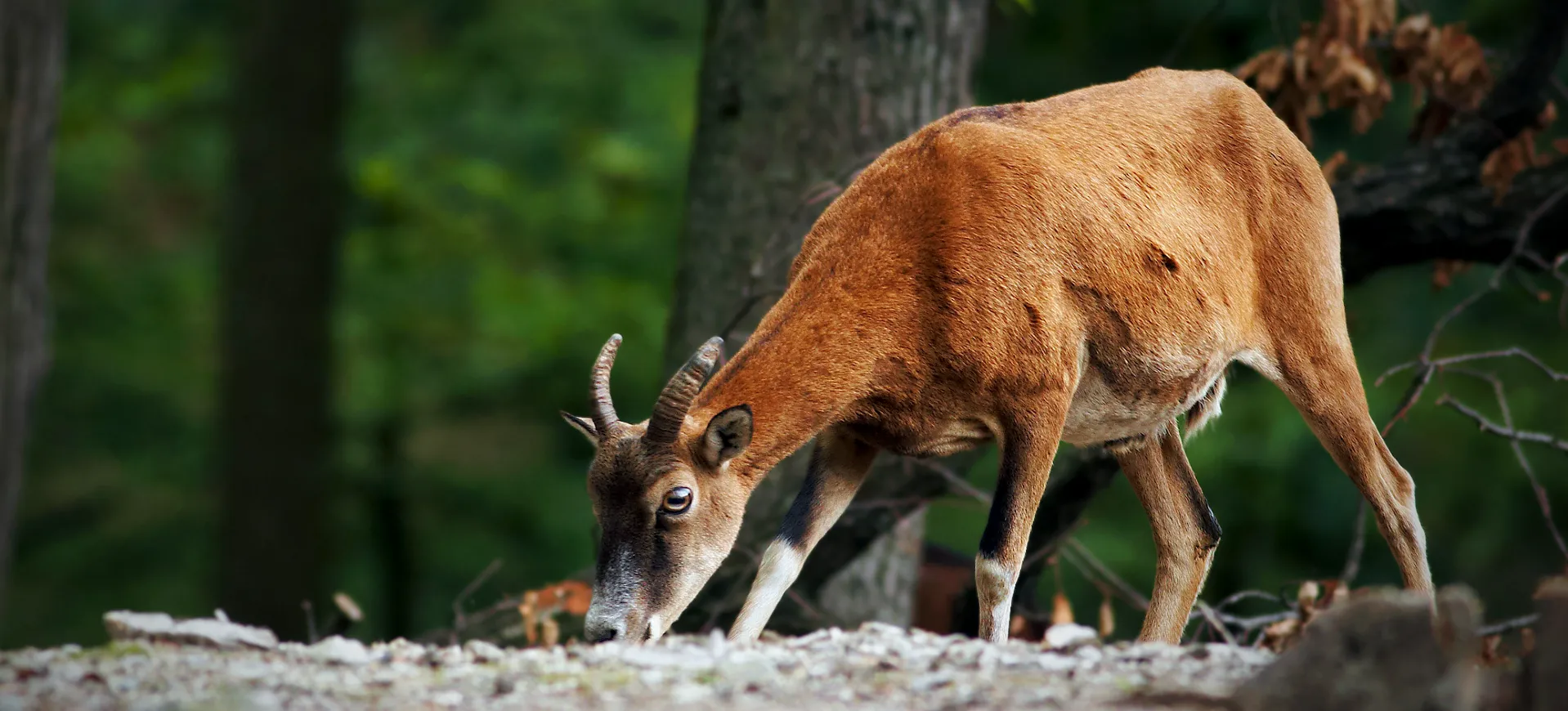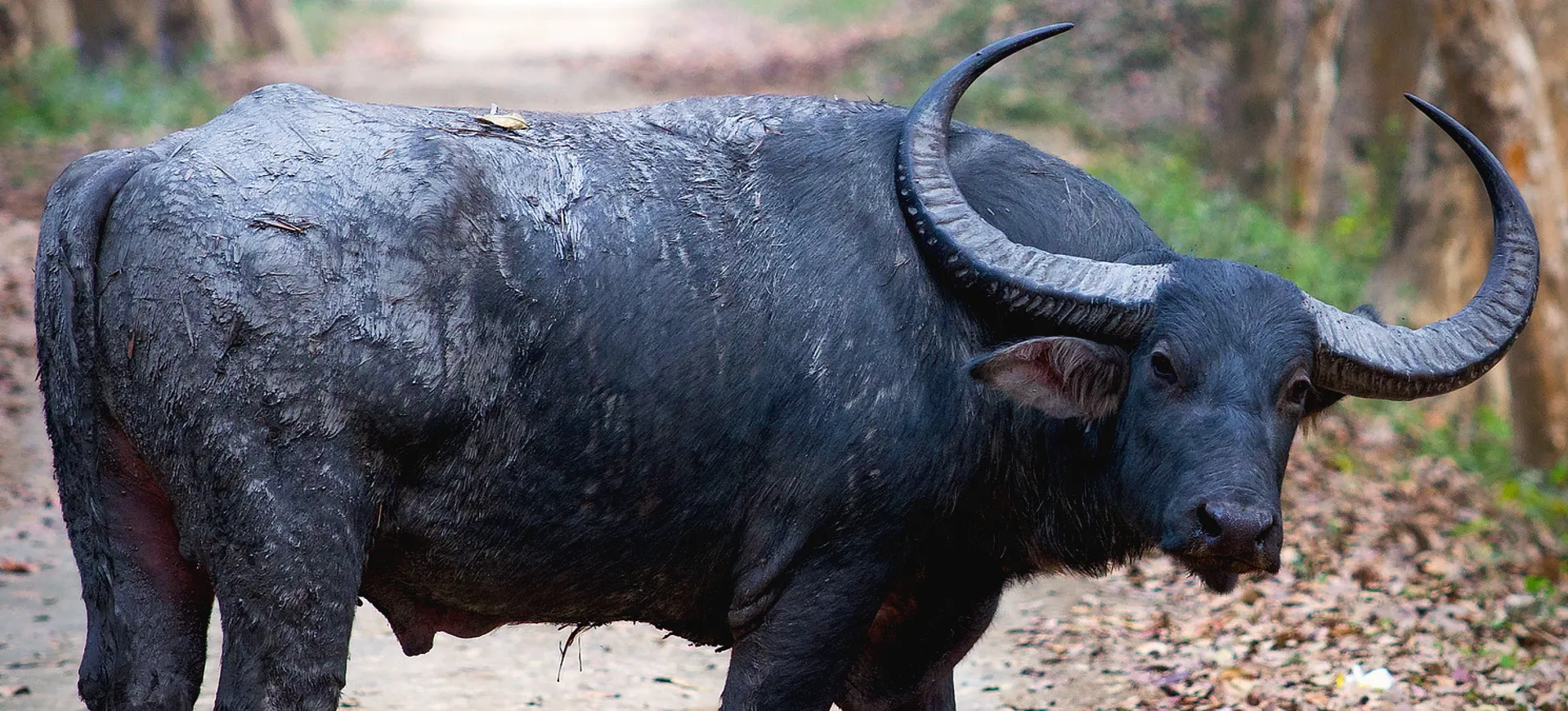Overview
The Nyala (Tragelaphus angasii) is a medium-sized antelope native to Southern Africa. It exhibits a striking sexual dimorphism, with males being significantly larger than females and possessing long, spiral horns. The male Nyala’s coat is dark brown, marked with faint vertical white stripes and a bushy, white dorsal crest. In contrast, females and young are reddish-brown with more prominent white striping and no horns.
Nyalas are primarily browsers, feeding on leaves, flowers, and fruits, with a preference for high-quality, nutritious food sources. They are most active during the cooler parts of the day, such as early morning or late afternoon. This species is known for its secretive and skittish nature, often seeking refuge in thickets or forests when threatened. Nyalas are adept swimmers, which can be an escape tactic from predators.
These antelopes inhabit dense woodlands and thickets, usually close to water sources. They are generally found in areas with a combination of forest and open meadows, which provide adequate food and cover. The social structure of Nyalas is somewhat fluid, with females and young forming loose groups, while males are more solitary, only joining groups during mating season.
Taxonomy
Kingdom
Phylum
Class
Order
Family
Genus
Species
Type
Physical Description:
The male Nyala is striking with a dark brown or slate grey body accented by several vertical white stripes and spots. Their underparts and legs are lighter in color, and they have a long, bushy tail with a white underside. Mature males develop a mane of long, white hair along their backs and under their throats, adding to their majestic appearance. They also possess long, spiraled horns, which can grow up to 33 inches.
Females and juveniles are noticeably different in appearance from males. They have a reddish-brown coat with more distinct and numerous white stripes and spots. Females and young lack horns and the long hair mane characteristic of males. Both sexes have large, expressive ears with a distinctive white inner lining, and their eyes are surrounded by white chevron markings, enhancing their keen sense of sight.

Lifespan: Wild: ~15 years || Captivity: ~20 years

Weight: Male: 209-309 lbs (95-140 kg) || Female: 121-154 lbs (55-70 kg)

Length: Male: 75-83 inches (190-210 cm) || Female: 67-71 inches (170-180 cm)

Height: Male: 41-43 inches (105-110 cm) || Female: 35-37 inches (90-95 cm)

Top Speed: 35 mph (56 km/h)
Characteristic:
Native Habitat:
Nyalas are native to Southern Africa, with their range primarily in Mozambique, Malawi, Zimbabwe, and South Africa. They inhabit dense woodland and thick brush, often near water sources. Their preferred habitat includes riverine forests, dense bushlands, and areas with prevalent acacia trees.
The adaptability of Nyalas to various habitats has allowed them to survive in regions with significant human activity. They have become common in some game reserves and national parks, where they benefit from protection and managed environments. Their dependence on dense cover for hiding and feeding means they are rarely found in open grasslands.
Climate Zones:
Biomes:
Biogeographical Realms:
Continents:
Countries:
Diet:
Diet & Feeding Habits:
Nyalas are predominantly browsers with a diet primarily consisting of leaves, fruits, flowers, and twigs. They prefer new growth and often feed on shoots from the lower branches of trees and bushes. Their diet changes seasonally, with more fruits and flowers consumed during the wet season and more leaves during the dry season.
The feeding behavior of Nyalas is cautious and deliberate, reflecting their shy nature. They usually feed in the early morning and late afternoon, avoiding the day’s heat. Nyalas also visit salt licks to supplement their diet with minerals. Their ability to feed on various plant materials allows them to thrive in diverse habitats, including woodlands and thickets.
Mating Behavior:
Mating Description:
Nyala mating systems are characterized by a loose polygynous structure, where dominant males mate with multiple females during the breeding season. Males display a unique and elaborate ritual called lateral presentation, exhibiting their size and strength to potential mates or competing males. A slow, sideways dance often accompanies this display to intimidate rivals and attract females.
The breeding season for Nyalas typically occurs during the wetter months, when resources are abundant, though it can vary based on geographical location and environmental conditions. Females are sexually mature at around 11-12 months but usually first breed at around 18-24 months. After a gestation period of approximately seven months, a single calf is born, which the mother hides in dense vegetation for the first few weeks of its life, visiting only to nurse. This strategy helps protect the vulnerable offspring from predators until it’s strong enough to join the herd.
Reproduction Season:
Birth Type:
Pregnancy Duration:
Female Name:
Male Name:
Baby Name:
Social Structure Description:
Nyalas have a unique social structure characterized by solitary and group behaviors. Males are typically solitary or form small bachelor groups, especially outside the breeding season, while females are more social, forming herds with other females and their young. These herds are loose and can vary in size, often depending on the available resources and the time of year.
Despite their social tendencies, Nyalas are also known for their secretive nature, preferring to remain hidden within their dense habitat. This behavior helps protect them from predators and allows for a more solitary lifestyle when necessary. The balance between social and solitary behaviors is a key aspect of their survival strategy, enabling them to adapt to changing environmental conditions and threats.
Groups:
Conservation Status:
Population Trend:
The overall population of Nyala is considered stable, primarily due to effective management in protected areas and private game reserves. Their adaptability to different environments has also contributed to their steady numbers. However, certain populations outside protected areas are more vulnerable, facing habitat loss and hunting threats.
While the Nyala is not endangered, its dependence on dense habitats makes it susceptible to deforestation and habitat fragmentation. In some regions, populations have declined due to these pressures, highlighting the need for continued conservation efforts. On the other hand, in areas where they are actively protected and managed, such as in South Africa’s game reserves, Nyalas have shown significant population growth, demonstrating the species’ resilience when given adequate protection and habitat.
Population Threats:
The primary threats to Nyala populations include habitat loss due to agricultural expansion, deforestation, and human settlement. As their natural habitats are encroached upon, Nyalas lose the cover and food sources essential for survival. Additionally, in some areas, they are hunted for their meat and skin, which can lead to localized declines.
Another significant threat is the potential for disease transmission from domestic animals, which can devastate wild Nyala populations. Efforts to reduce these threats are crucial for the conservation of the species, focusing on habitat protection, sustainable land-use practices, and controlling illegal hunting and poaching activities.
Conservation Efforts:
Conservation efforts for the Nyala have been relatively successful, particularly in protected areas and private game reserves. These efforts include habitat protection, anti-poaching measures, and legal regulations on hunting. Reintroduction and translocation projects have also been beneficial, helping to establish new populations in suitable habitats and enhancing genetic diversity.
Education and community involvement are other critical components of Nyala conservation, ensuring local communities understand the species’ importance and the conservation benefits. Sustainable ecotourism initiatives have also played a role, providing economic incentives for local communities to protect Nyala habitats and populations.
Additional Resources:
Fun Facts
- Only male Nyalas have long, spiral horns that are used for display and defense.
- The Nyala’s name is believed to originate from the Zulu word ‘inyala,’ which means onion, possibly referring to the animal’s shy and layered nature.
- They are exceptional jumpers, capable of clearing heights of over 6 feet.
- Nyala calves are born with a reddish-brown coat, which helps them blend into the forest floor.
- As they mature, males undergo a significant color change, transitioning from the female’s reddish color to dark grey or brown.
- The lateral display of the males is a unique behavior among antelopes and is considered one of the most elaborate.
- Nyalas are most active during the cooler parts of the day, usually at dawn and dusk.
- They have a distinct alarm call, described as a bark, to alert others of potential danger.
- Nyalas can live up to 18 years in the wild and slightly longer in captivity.
- Their striped pattern provides excellent camouflage, breaking up their outline and helping them blend into their forested environments.















































































